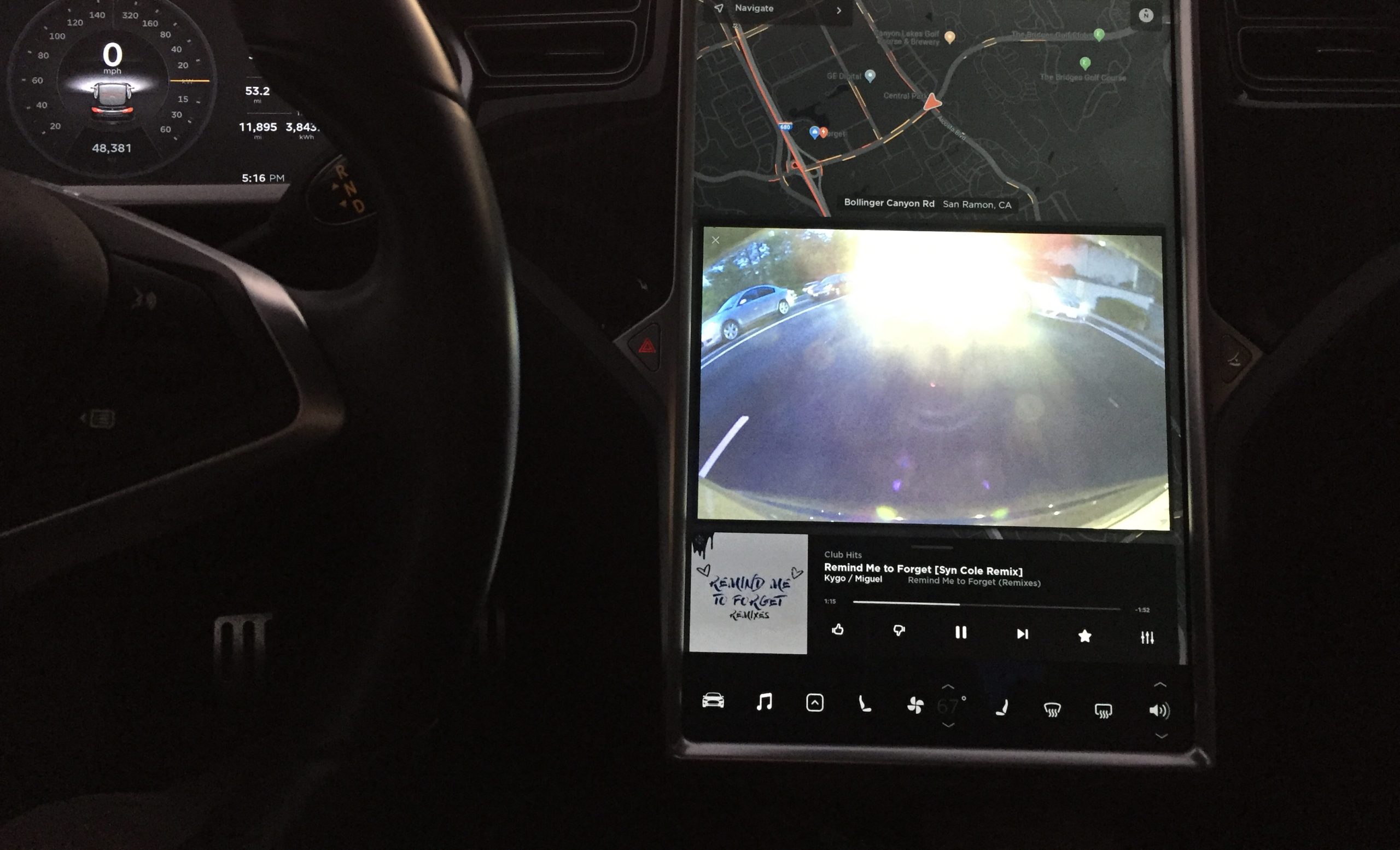
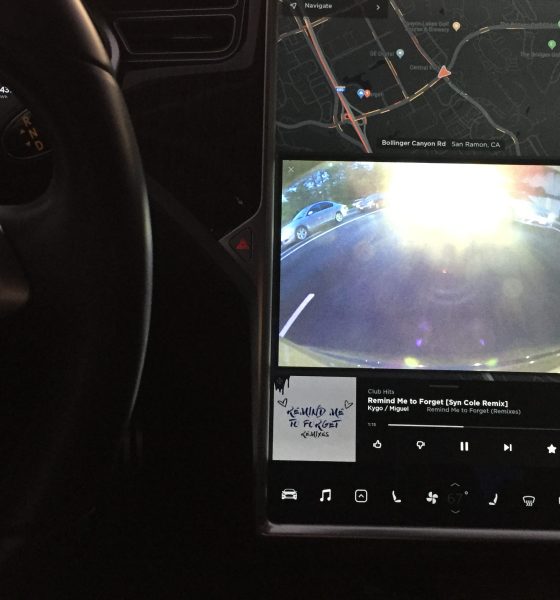
Firmware
Tesla patent hints at 4-way split screen for apps and customized taskbar
A recently published patent has revealed that Tesla is exploring the idea of a user interface allowing drivers to launch and display up to four apps simultaneously in a four-way split screen arrangement. What’s more, Tesla also seems to be preparing a setting that will enable users to customize the arrangement of icons in their vehicles’ main taskbar.
The new features were outlined in a patent published on November 1, 2018. Simply titled as “Vehicular Interface System for Launching an Application,” the patent describes updates to the way users interact with Tesla’s graphical user interface. The patent, whose illustrations still reflect the company’s V8 design, included some GUI updates that were included in the Software Version 9 release. Among these are a taskbar that’s repositioned to the bottom of the display for Model S and X vehicles, as well as the capability to resize open windows after apps are launched.
Among the illustrations that Tesla included for the patent, though, is a feature that is yet to make its way to Version 9 — the capability to launch up to four apps that are displayed in a four-way split screen. The feature would be activated by selecting an icon on the taskbar, which would, in turn, display options on which portion of the display the app would launch.
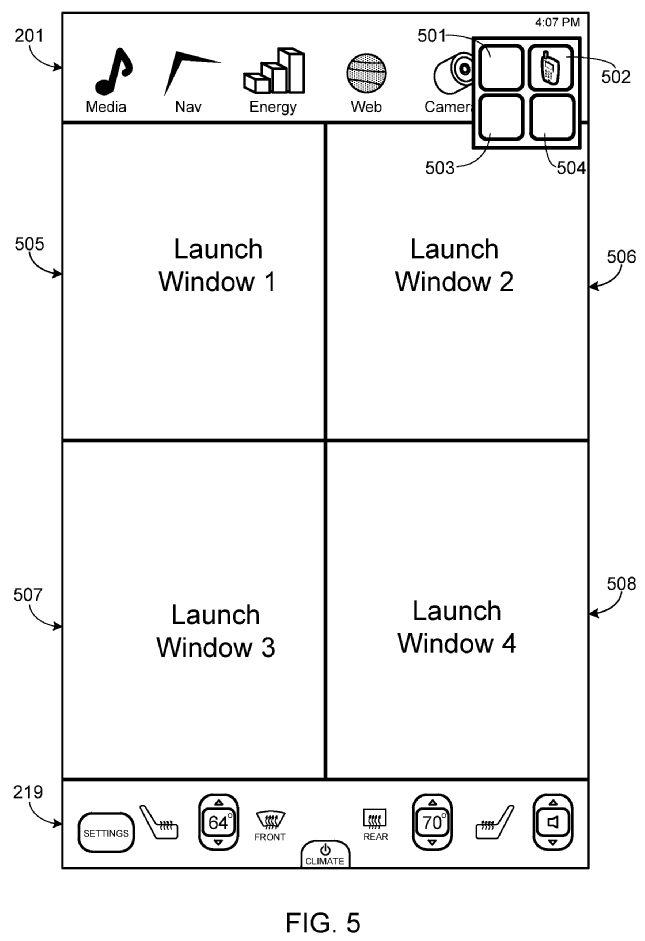
Apart from the capability to launch multiple apps in a four-way split screen arrangement, Tesla’s patent also included references to users having the ability to configure app shortcuts displayed on the taskbar. Such a system is an update to the current taskbar setup, where shortcuts are typically representative of apps “for which frequent access is desired.”
“Within (the) taskbar are icons representative of the applications that provide the user with shortcut access to each of the designated applications, for example, applications that control various vehicle subsystems. In one embodiment the application shortcuts located within the taskbar are configured by a third party (e.g., the system or vehicle manufacturer) while in another embodiment the application shortcuts located within the taskbar are configured by the end user.
“In the illustrated GUI a portion of the screen is used for persistent controls that remain on the display screen regardless of the applications being displayed on the screen. These persistent controls may be selected based on the need for frequent access (e.g., temperature controllers, seat warmers, climate controller, and audio volume controller, etc.) or for safety (e.g., front defroster controller, rear defroster controller, etc.). In the exemplary screen, a “settings” button is also shown, which provides the user with instant access to the various vehicle settings (e.g., lights, sunroof control, etc.). The persistent controls may be configured by the user, the system/vehicle manufacturer, or by a third party.”
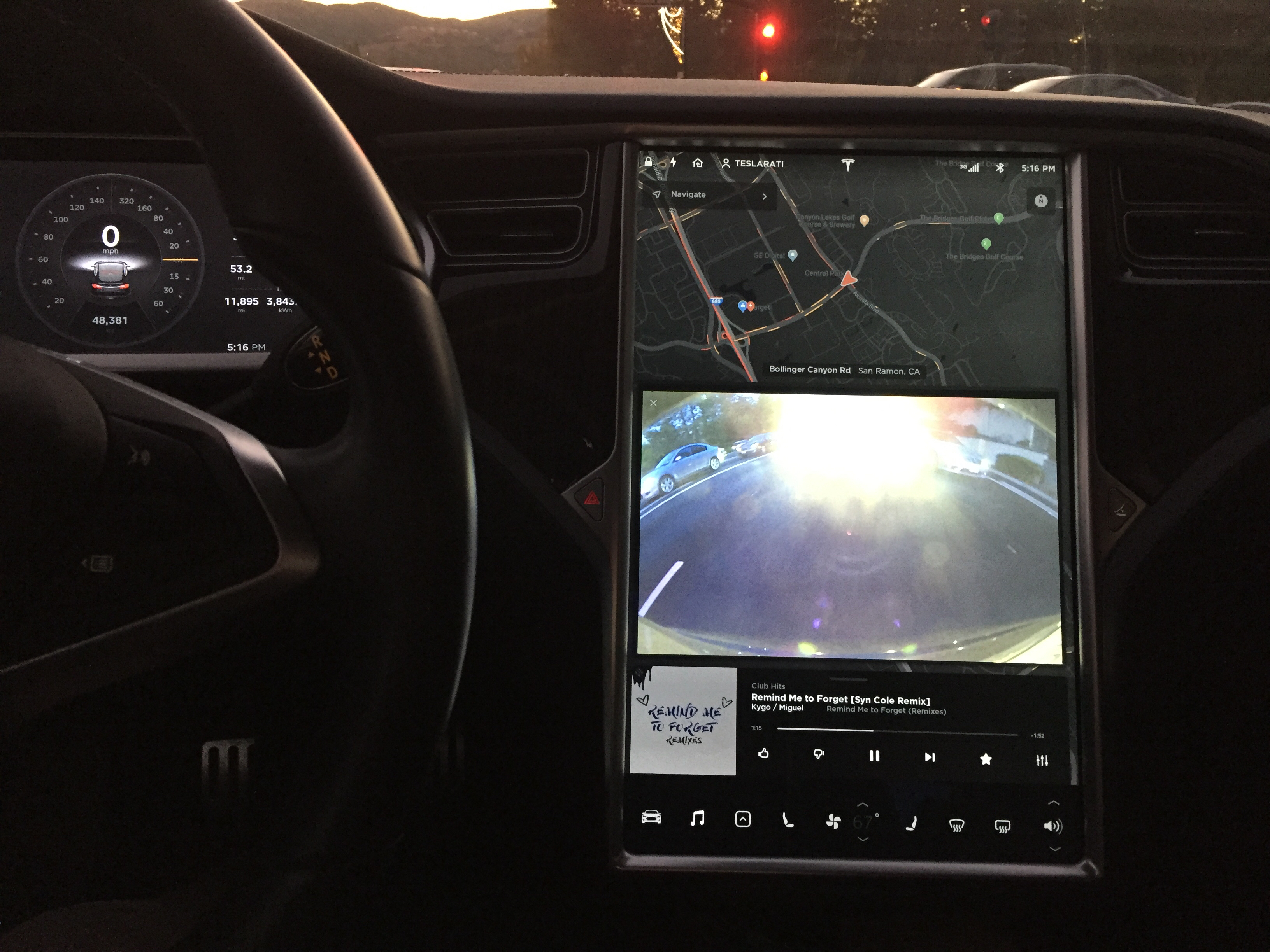
The full text of Tesla’s patent on its GUI updates could be accessed here.
Considering that Tesla had already rolled out some of the features outlined in its recently published patent in Version 9, it seems safe to assume that the four-way split screen capability and taskbar customizations are likely coming in future software updates. Hence, it could very well be just a matter of time before these features are introduced to Tesla’s fleet of electric vehicles. It must be noted that Tesla’s V9 update introduced notable changes and optimizations even to cars that are equipped with older hardware. Thus, there is a good chance that even Tesla’s Gen 1 vehicles would also receive taskbar customizations and four-way split screen capabilities.
Tesla’s recently published patents have covered a rather wide range of improvements for the electric car maker’s vehicles. Last month, for example, a patent teased the introduction of an automatic tire inflation system for the Tesla Semi, which opens opportunities for the company’s present and upcoming vehicles like the Model X, Model Y, and the Tesla pickup truck to acquire off-road capabilities. A patent for a clever clamping assembly that allows Tesla to address misaligned panels during the manufacturing process was recently published earlier this month as well. Apart from these, a rigid structural cable design that could help the company automate its vehicle production process further was also outlined in a patent published in October.

Firmware
Tesla mobile app shows signs of upcoming FSD subscriptions
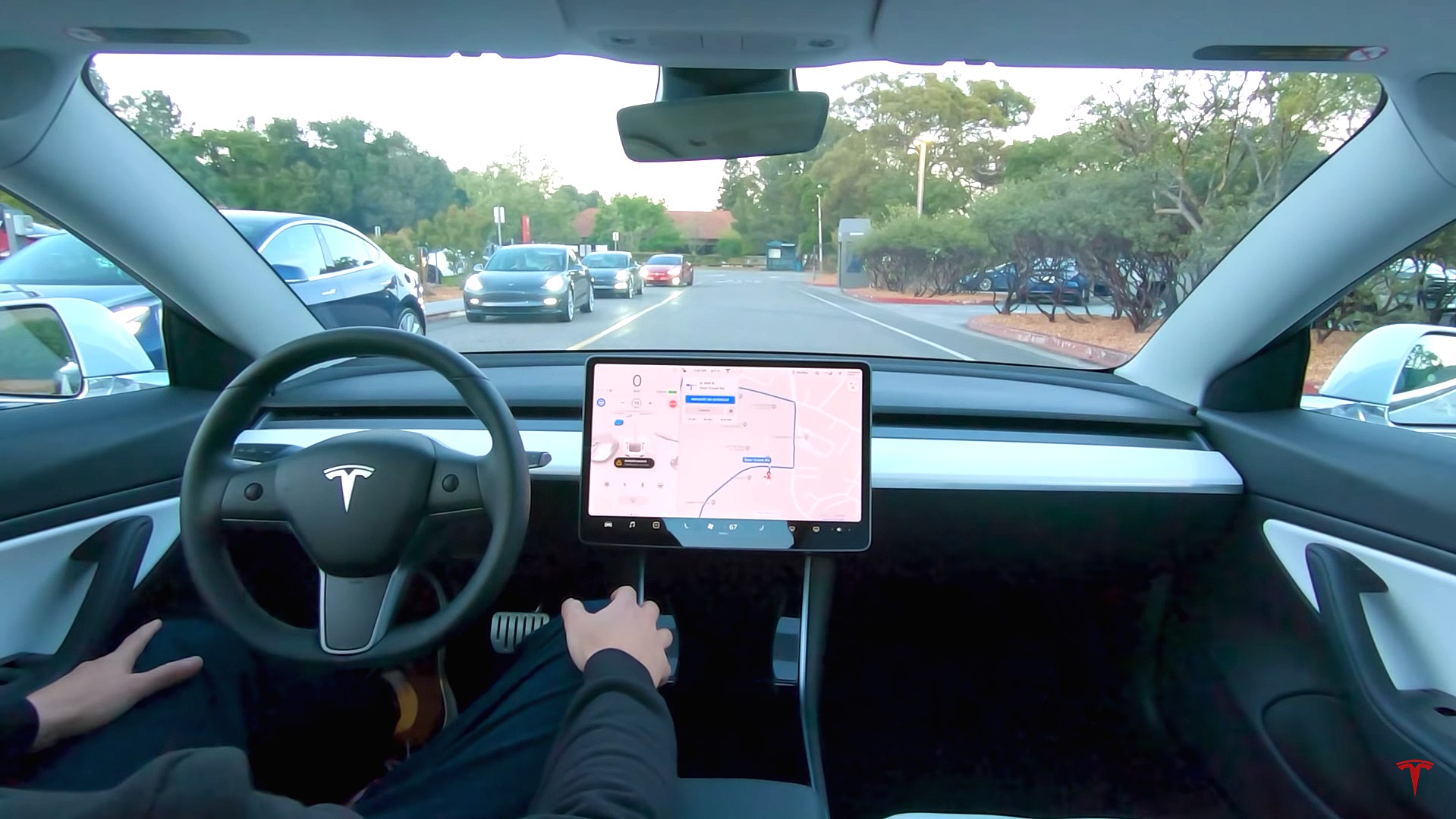
It appears that Tesla may be preparing to roll out some subscription-based services soon. Based on the observations of a Wales-based Model 3 owner who performed some reverse-engineering on the Tesla mobile app, it seems that the electric car maker has added a new “Subscribe” option beside the “Buy” option within the “Upgrades” tab, at least behind the scenes.
A screenshot of the new option was posted in the r/TeslaMotors subreddit, and while the Tesla owner in question, u/Callump01, admitted that the screenshot looks like something that could be easily fabricated, he did submit proof of his reverse-engineering to the community’s moderators. The moderators of the r/TeslaMotors subreddit confirmed the legitimacy of the Model 3 owner’s work, further suggesting that subscription options may indeed be coming to Tesla owners soon.
Did some reverse engineering on the app and Tesla looks to be preparing for subscriptions? from r/teslamotors
Tesla’s Full Self-Driving suite has been heavily speculated to be offered as a subscription option, similar to the company’s Premium Connectivity feature. And back in April, noted Tesla hacker @greentheonly stated that the company’s vehicles already had the source codes for a pay-as-you-go subscription model. The Tesla hacker suggested then that Tesla would likely release such a feature by the end of the year — something that Elon Musk also suggested in the first-quarter earnings call. “I think we will offer Full Self-Driving as a subscription service, but it will be probably towards the end of this year,” Musk stated.
While the signs for an upcoming FSD subscription option seem to be getting more and more prominent as the year approaches its final quarter, the details for such a feature are still quite slim. Pricing for FSD subscriptions, for example, have not been teased by Elon Musk yet, though he has stated on Twitter that purchasing the suite upfront would be more worth it in the long term. References to the feature in the vehicles’ source code, and now in the Tesla mobile app, also listed no references to pricing.
The idea of FSD subscriptions could prove quite popular among electric car owners, especially since it would allow budget-conscious customers to make the most out of the company’s driver-assist and self-driving systems without committing to the features’ full price. The current price of the Full Self-Driving suite is no joke, after all, being listed at $8,000 on top of a vehicle’s cost. By offering subscriptions to features like Navigate on Autopilot with automatic lane changes, owners could gain access to advanced functions only as they are needed.
Elon Musk, for his part, has explained that ultimately, he still believes that purchasing the Full Self-Driving suite outright provides the most value to customers, as it is an investment that would pay off in the future. “I should say, it will still make sense to buy FSD as an option as in our view, buying FSD is an investment in the future. And we are confident that it is an investment that will pay off to the consumer – to the benefit of the consumer.” Musk said.
Firmware
Tesla rolls out speed limit sign recognition and green traffic light alert in new update
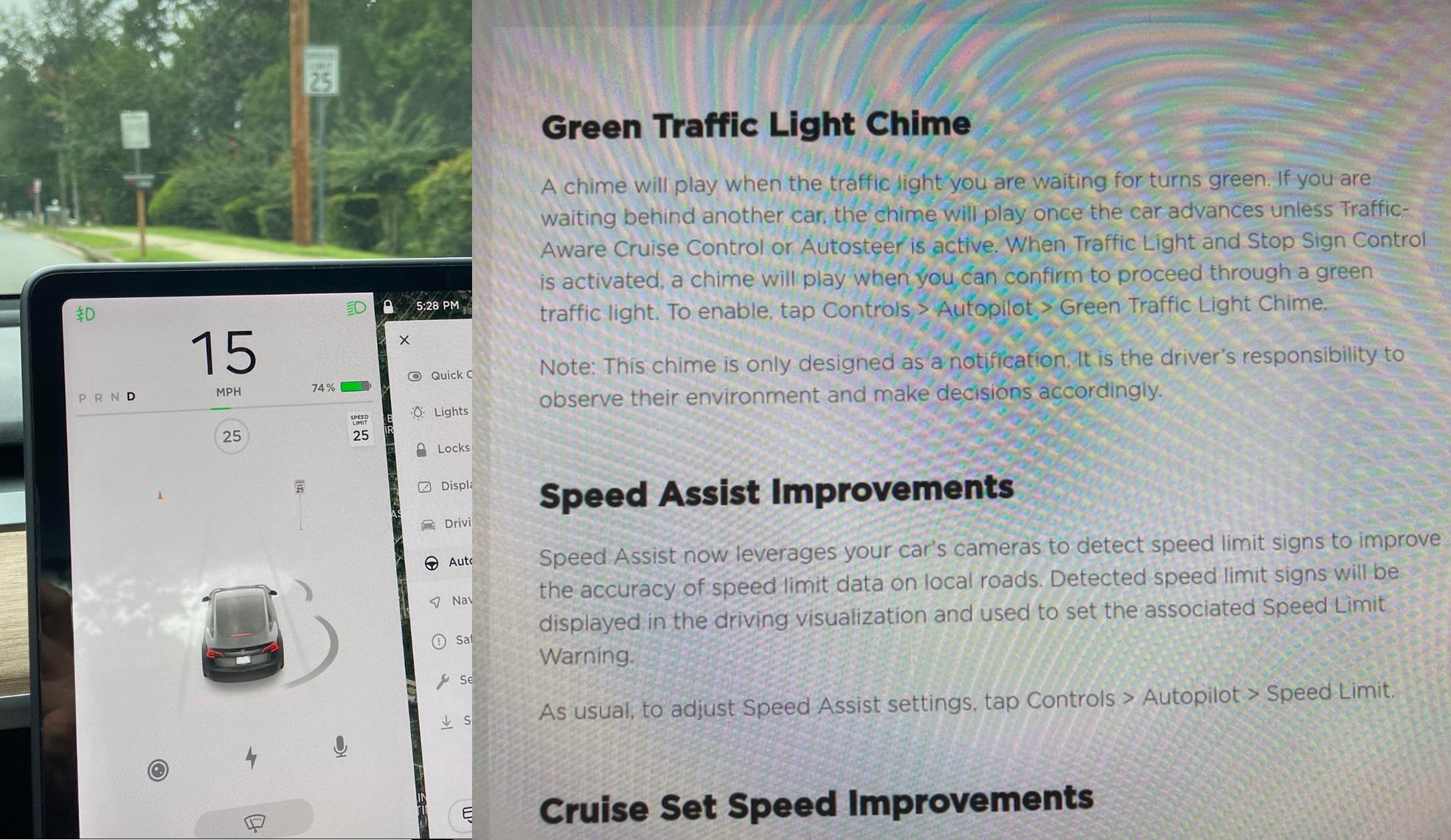
Tesla has started rolling out update 2020.36 this weekend, introducing a couple of notable new features for its vehicles. While there are only a few handful of vehicles that have reportedly received the update so far, 2020.36 makes it evident that the electric car maker has made some strides in its efforts to refine its driver-assist systems for inner-city driving.
Tesla is currently hard at work developing key features for its Full Self-Driving suite, which should allow vehicles to navigate through inner-city streets without driver input. Tesla’s FSD suite is still a work in progress, though the company has released the initial iterations of key features such Traffic Light and Stop Sign Control, which was introduced last April. Similar to the first release of Navigate on Autopilot, however, the capabilities of Traffic Light and Stop Sign Control were pretty basic during their initial rollout.
2020.36 Showing Speed Limit Signs in Visualization from r/teslamotors
With the release of update 2020.36, Tesla has rolled out some improvements that should allow its vehicles to handle traffic lights better. What’s more, the update also includes a particularly useful feature that enables better recognition of speed limit signs, which should make Autopilot’s speed adjustments better during use. Following are the Release Notes for these two new features.
Green Traffic Light Chime
“A chime will play when the traffic light you are waiting for turns green. If you are waiting behind another car, the chime will play once the car advances unless Traffic-Aware Cruise Control or Autosteer is active. When Traffic Light and Stop Sign Control is activated, a chime will play when you can confirm to proceed through a green traffic light. To enable, tap Controls > Autopilot > Green Traffic Light Chime.
“Note: This chime is only designed as a notification. It is the driver’s responsibility to observe their environment and make decisions accordingly.”
Speed Assist Improvements
“Speed Assist now leverages your car’s cameras to detect speed limit signs to improve the accuracy of speed limit data on local roads. Detected speed limit signs will be displayed in the driving visualization and used to set the associated Speed Limit Warning.
“As usual, to adjust Speed Assist settings, tap Controls > Autopilot > Speed Limit.”
Footage of the new green light chime in action via @NASA8500 on Twitter ✈️ from r/teslamotors
Amidst the rollout of 2020.36’s new features, speculations were abounding among Tesla community members that this update may include the first pieces of the company’s highly-anticipated Autopilot rewrite. Inasmuch as the idea is exciting, however, Tesla CEO Elon Musk has stated that this was not the case. While responding to a Tesla owner who asked if the Autopilot rewrite is in “shadow mode” in 2020.36, Musk responded “Not yet.”
Firmware
Tesla rolls out Sirius XM free three-month subscription
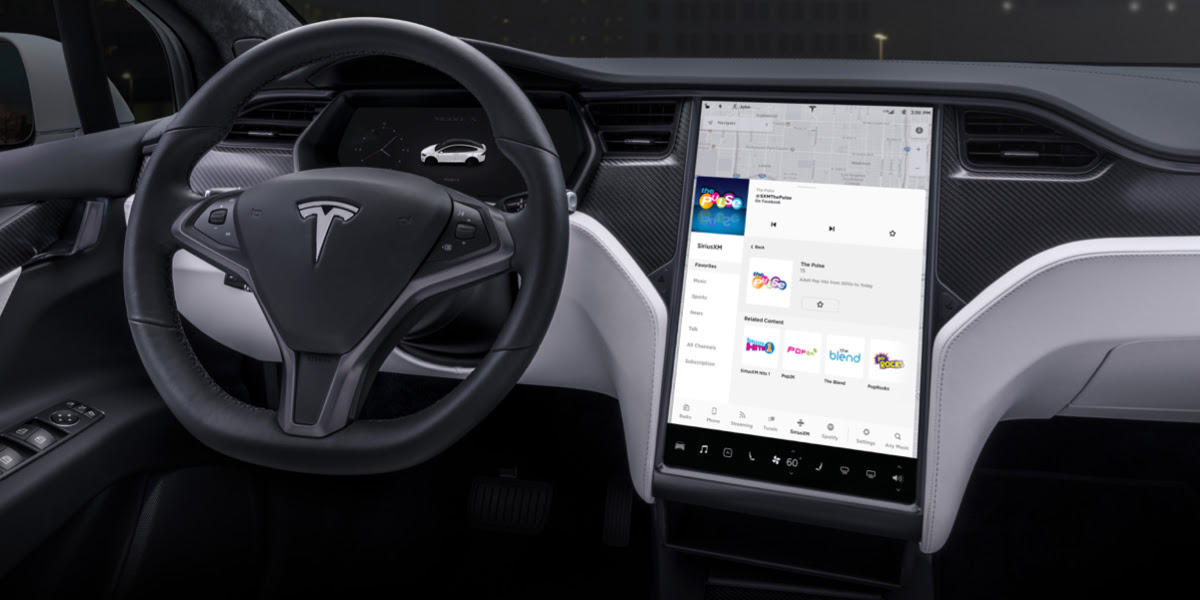
Tesla has rolled out a free three-month trial subscription to Sirius XM, in what appears to be the company’s latest push into making its vehicles’ entertainment systems more feature-rich. The new Sirius XM offer will likely be appreciated by owners of the company’s vehicles, especially considering that the service is among the most popular satellite radios in the country today.
Tesla announced its new offer in an email sent on Monday. An image that accompanied the communication also teased Tesla’s updated and optimized Sirius XM UI for its vehicles. Following is the email’s text.
“Beginning now, enjoy a free, All Access three-month trial subscription to Sirius XM, plus a completely new look and improved functionality. Our latest over-the-air software update includes significant improvements to overall Sirius XM navigation, organization, and search features, including access to more than 150 satellite channels.
“To access simply tap the Sirius XM app from the ‘Music’ section of your in-car center touchscreen—or enjoy your subscription online, on your phone, or at home on connected devices. If you can’t hear SiriusXM channels in your car, select the Sirius XM ‘Subscription’ tab for instruction on how to refresh your audio.”
Tesla has actually been working on Sirius XM improvements for some time now. Back in June, for example, Tesla rolled out its 2020.24.6.4 update, and it included some optimizations to its Model S and Model X’s Sirius XM interface. As noted by noted Tesla owner and hacker @greentheonly, the source code of this update revealed that the Sirius XM optimizations were also intended to be released to other areas such as Canada.
Interestingly enough, Sirius XM is a popular feature that has been exclusive to the Model S and X. Tesla’s most popular vehicle to date, the Model 3, is yet to receive the feature. One could only hope that Sirius XM integration to the Model 3 may eventually be included in the future. Such an update would most definitely be appreciated by the EV community, especially since some Model 3 owners have resorted to using their smartphones or third-party solutions to gain access to the satellite radio service.
The fact that Tesla seems to be pushing Sirius XM rather assertively to its customers seems to suggest that the company may be poised to roll out more entertainment-based apps in the coming months. Apps such as Sirius XM, Spotify, Netflix, and YouTube, may seem quite minor when compared to key functions like Autopilot, after all, but they do help round out the ownership experience of Tesla owners. In a way, Sirius XM does make sense for Tesla’s next-generation of vehicles, especially the Cybertruck and the Semi, both of which would likely be driven in areas that lack LTE connectivity.








